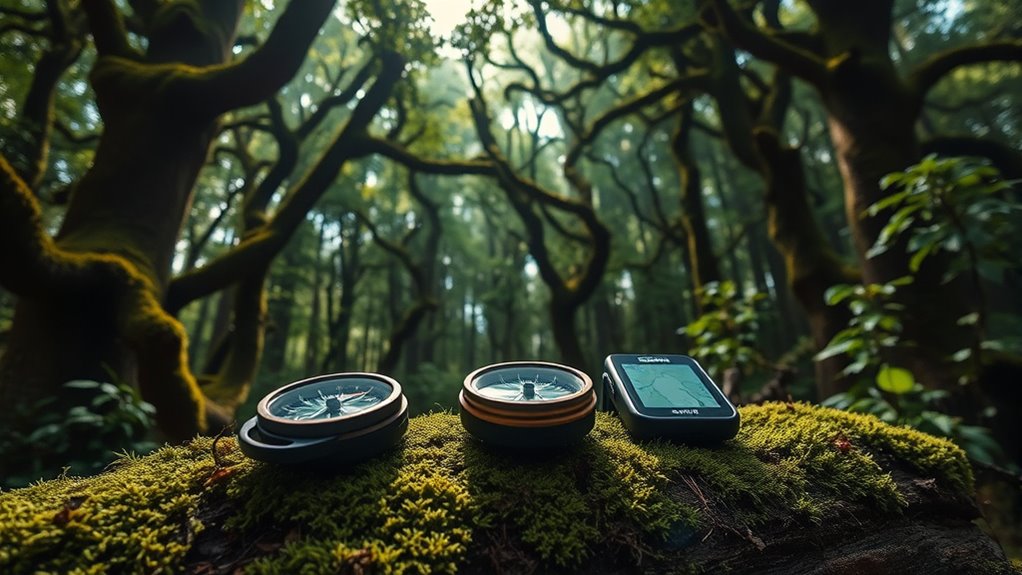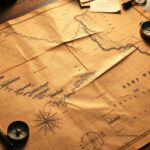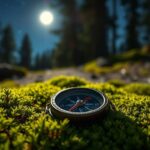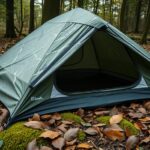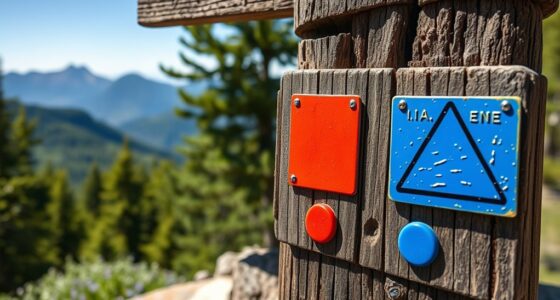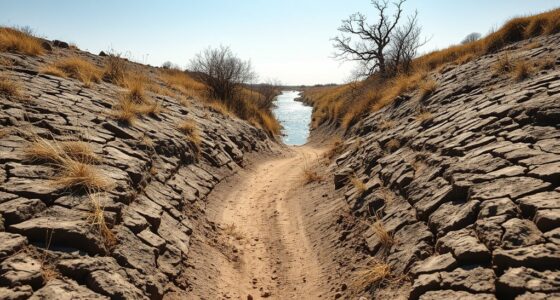In dense forests, a compass often outperforms GPS because it doesn’t rely on satellite signals or batteries, which can fail under thick canopy cover. You can use it instantly for orientation, even in remote areas with magnetic interference. While GPS provides precise locations, signals often weaken or drop altogether there. Knowing when to rely on its rugged simplicity can keep you on track—if you stay tuned, you’ll uncover how to maximize each tool’s strengths.
Key Takeaways
- In dense forests, a compass remains reliable despite GPS signal loss caused by canopy cover.
- Magnetic interference from metal objects or mineral-rich soil can disrupt compass accuracy, but it still functions without signals.
- GPS accuracy declines in thick forests due to signal attenuation, making the compass a more dependable navigation tool.
- A compass requires no batteries or signals, ensuring consistent performance in remote, forested environments.
- Combining a compass with GPS enhances navigation reliability, but in environments with signal issues, the compass often proves more dependable.
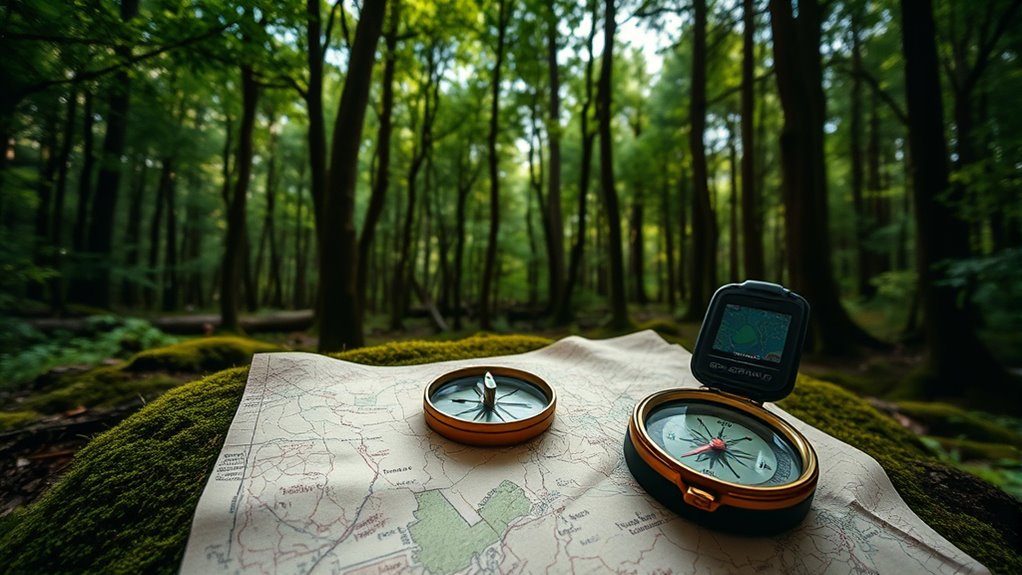
When it comes to navigation, choosing between a GPS device and a traditional compass can be a tough decision. In dense forests, where thick canopies limit visibility and signal reception, understanding the strengths and weaknesses of each tool becomes essential. A GPS device offers satellite accuracy, providing precise coordinates based on signals from satellites orbiting the Earth. However, in heavily wooded areas, satellite signals often struggle to penetrate the dense canopy, leading to reduced accuracy or complete signal loss. This can leave you relying on outdated or imprecise data, especially when the terrain is challenging and the margin for error is small.
On the other hand, a traditional compass doesn’t depend on satellites. Instead, it uses Earth’s magnetic field to point toward magnetic north. While this might seem straightforward, magnetic interference can sometimes throw you off. Metal objects, electronic devices, and even certain mineral deposits in the soil can distort magnetic readings, causing the needle to wobble or point in the wrong direction. This magnetic interference becomes particularly problematic in forested areas filled with metallic equipment, wire fences, or mineral-rich soil, making compass navigation less reliable unless you’re trained to interpret the readings accurately.
Magnetic interference from metal objects and mineral-rich soil can disrupt compass readings in dense forests.
Despite these challenges, a compass can excel where GPS falls short. Since it doesn’t rely on signals from satellites, it remains unaffected by canopy cover or remote locations. As long as you know how to read it correctly and have a good map, a compass can serve as a dependable backup in dense forests. It offers the advantage of instant orientation without the need for battery power or signal reception, which are common points of failure for GPS devices. Additionally, with practice, you can develop a sense of direction that isn’t hindered by environmental factors, allowing you to navigate confidently even when technology fails. This reliability makes the compass an invaluable tool in such environments.
That said, both tools have their place. GPS devices have come a long way, with features designed to mitigate some issues like satellite accuracy degradation through multi-constellation systems (GPS, GLONASS, Galileo). Still, their reliance on clear signals makes them less dependable in dense forests. Conversely, a compass, though seemingly simple, remains a resilient and effective navigation tool when used correctly, especially in environments where satellite signals are blocked or compromised by magnetic interference. Knowing when to rely on each can make the difference between a successful journey and a confusing detour in the woods.
Frequently Asked Questions
How Do Magnetic Declination and Declination Charts Impact Compass Accuracy?
Magnetic declination and declination charts are essential for accurate compass use. Magnetic variation, which is the difference between true north and magnetic north, varies by location. By consulting declination charts, you can make the necessary declination adjustment, ensuring your compass points correctly. Ignoring these factors can lead to navigation errors, especially in unfamiliar terrain. Always update your declination info regularly for precise readings and reliable navigation.
Can Traditional Compasses Be Used Effectively Underwater or in Wet Conditions?
Ever wondered if your compass can survive underwater or wet conditions? You’ll be glad to know that traditional compasses with waterproof durability are designed for just that. They resist water damage and maintain accuracy despite magnetic interference from nearby metal or electronics. So, when you’re in challenging environments, your trusty compass can still guide you, proving that sometimes, old-school tools outperform the high-tech options in rugged conditions.
What Are the Battery Life Considerations for GPS Devices in Remote Areas?
When you’re using GPS devices in remote areas, battery life is essential. You need to take into account battery consumption and implement effective power management strategies. Turn off unnecessary features, reduce screen brightness, and use battery saver modes to extend usage time. Carry spare batteries or portable chargers, so you’re not caught unprepared. Proper power management ensures your GPS stays functional longer, providing reliable navigation during your outdoor adventures.
How Do Environmental Factors Like Dense Foliage Affect GPS Signals?
Imagine your GPS signals steering through a dense jungle of leaves and branches, like whispers lost in a thunderstorm. Dense foliage causes satellite obstructions, leading to signal degradation that hampers accuracy. This environmental barrier blocks or weakens signals, making it harder for your device to pinpoint your location. As a result, reliance on traditional tools like a compass becomes valuable when nature’s canopy turns your digital map into a blurry mirage.
Are There Hybrid Navigation Tools Combining GPS and Compass Features?
You’ll find hybrid navigation tools that combine GPS and compass features, offering digital overlays and augmented navigation. These devices enhance your orientation by seamlessly integrating satellite data with compass readings, providing reliable guidance even when signals weaken. This combination helps you stay on track in dense forests or challenging environments, ensuring you can navigate confidently with real-time digital updates and augmented navigation support, making outdoor adventures safer and more efficient.
Conclusion
So, when it comes to maneuvering dense forests, a trusty compass still holds its ground, much like a seasoned explorer’s compass rose before the age of smartphones. While GPS offers convenience, a compass’s simplicity and reliability never truly go out of style—think of it as the vintage leather-bound map in a world of digital charts. In the end, choosing between them depends on your adventure’s nature, but never underestimate the power of a classic tool in the wilderness.

